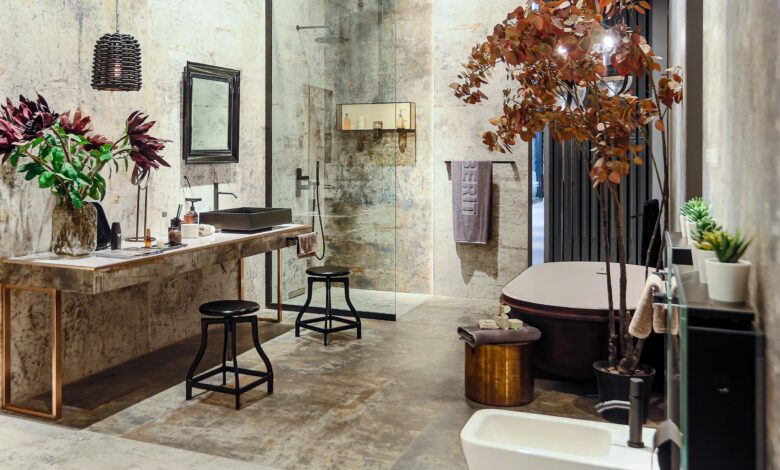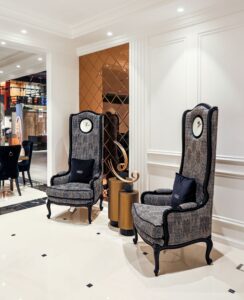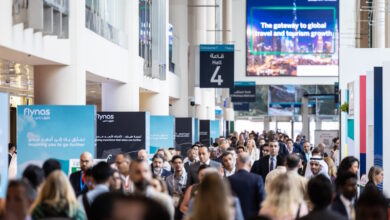
Kader Mithani, CEO and Founder of Casamia talks about the latest porcelain trend in interior design for homes in the UAE

Porcelain is the new hype when it comes to interior decoration. Whether building a new house or renovating your home, it’s important to select quality materials which are durable, easy to clean and maintain, can withstand daily wear and tear and are not only still affordable, but much more hygienic than natural materials. This luxury looking material is porcelain and is taking the spotlight when it comes to high-end home interiors.
Porcelain is a type of ceramic made from refined clay, which is then baked at high temperatures making it hard wearing. It is a very diverse material which can be made to look like marble, granite, slate, hardwoods, limestone or other natural materials. While many might still lean towards using marble in their kitchen, dining and floors, the benefit of using porcelain far outweighs that of marble. Marble is a more porous material making it easier to absorb stains and bacteria, making it less resistant to wear and tear and less hygienic.
In the UAE, we have seen marble and natural stone-looking porcelain as the top trends in both residential and commercial designs. These chic surfaces can be styled any way to give an elegant, high-end and clean appearance.
The large-format, full-body, Italian, porcelain slabs with varying thickness, allow the porcelain brands offered at Casamia to be installed in various design applications. Unlike other surfaces, these slabs are suitable for contact with food, which means they are hygienic, stain proof, mold proof and easy to clean. Porcelain stoneware is unaffected by high temperatures, scratchproof, completely waterproof and also withstands UV rays and all kinds of weather. We have seen a notable year on year increase since the start of the pandemic in porcelain sales. Key customer factors have been; resilience to weather conditions and wear and tear, affordability compared to marble and hygiene – a new element to the interior design decision making process.
Mithani provides the reasons for porcelain becoming the material of choice for homes across the UAE:
Resilience
Porcelain tile’s outstanding qualities of being water and sun damage resistant, makes it an ideal solution for surface coverings for which other materials are not suitable. Historically, it has been the preferred solution for external applications like ventilated facades, swimming pools and patios. Commercial applications like shopping malls, hospitals, restaurants, and airports also favour the material for its durability. Today, porcelain tiles’ excellent technical performance and aesthetics has enabled the exploring of different applications like countertops, furniture and home accessories.
Porcelain is an extremely hard surface that isn’t prone to the etching, staining and other damage that daily household life can inflict on natural marble, however, it can be manufactured with comparable beauty, thanks to ink jet production technologies. Unlike marble or granite, each porcelain slab is uniform. If you’re opting for a marble look – which is one of the most popular porcelain styles in use for both kitchens and bathrooms right now – you’ll be able to continue a vein across a wide wall or cabinet bank with book matched slabs for a traditional upscale look.
When selecting porcelain for different areas of your house, something to be aware of is its PEI hardness rating—the Porcelain Enamel Institute rating, which indicates how hard the material is. For high traffic areas like kitchen- and living room floors or hotel lobbies it is better to consider porcelain with a PEI of four or five. Four countertops a PEI ranking of three or four is sufficient, and a PEI rating of one or two for walls.

Cost effective
Porcelain tiles are more cost effective than natural products and with the variety of designs available in the market, The buyer pays a fraction of the cost of real stone or wood while still achieving the same design aesthetic requirement.
Hygiene
Viruses rely on moisture to remain alive and active. Because porcelain is inorganic, impervious and water resistant, viruses are not able to survive on a porcelain surface. Awareness of this information, coupled with its versatility and beauty, has made porcelain the top choice for high-end finishes this year. It is now referred to as one of, if not, the top material choice to be incorporated into post-pandemic interior design projects.
Some manufacturers have gone the extra mile when it comes to hygiene, in response to customer demand. Laminam Tiles, for instance, uses bio-active treatments when manufacturing its products which lends to anti-bacterial and pollutant eradication properties. It also has self-cleaning properties in exterior surfaces, encouraging the natural elimination of organic compounds due to the aggression of polluting substances.
In addition, according to the tile industry informational resource WhyTile.com, ceramics are considered to have the lowest carbon footprint of any flooring material, the lowest global warming potential, and the lowest fossil fuel resource depletion.




